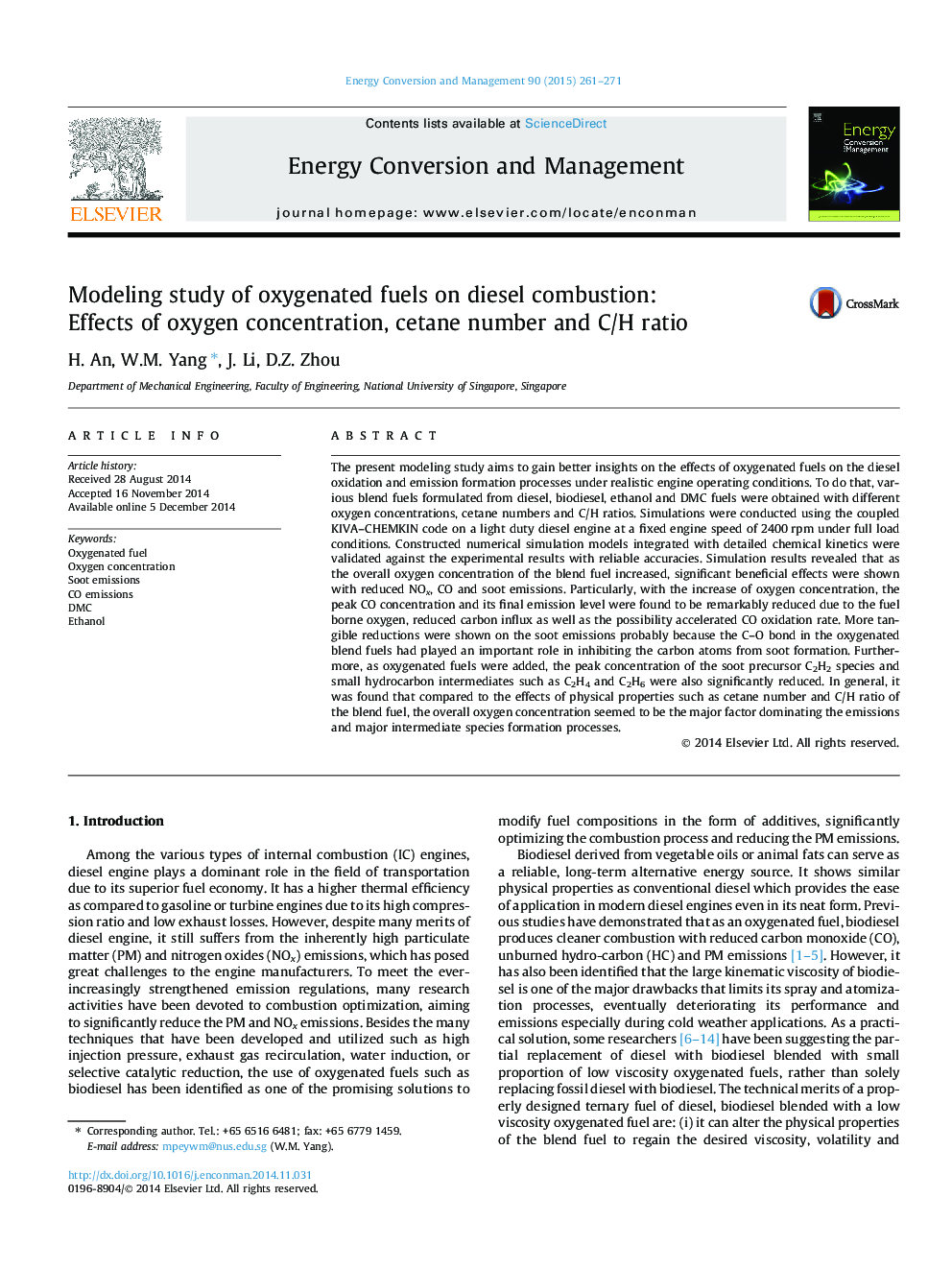| کد مقاله | کد نشریه | سال انتشار | مقاله انگلیسی | نسخه تمام متن |
|---|---|---|---|---|
| 771821 | 1462872 | 2015 | 11 صفحه PDF | دانلود رایگان |

• The effects of oxygenated fuels on diesel combustion are extensively investigated.
• CO and soot emissions are reduced with the increase of oxygen concentration.
• The C–O bond in the oxygenated fuels inhibits the formation of soot precursor C2H2.
• Small intermediates such as C2H4 and C2H6 are significantly reduced.
• Oxygen concentration seems to be the dominating factor affecting the emissions.
The present modeling study aims to gain better insights on the effects of oxygenated fuels on the diesel oxidation and emission formation processes under realistic engine operating conditions. To do that, various blend fuels formulated from diesel, biodiesel, ethanol and DMC fuels were obtained with different oxygen concentrations, cetane numbers and C/H ratios. Simulations were conducted using the coupled KIVA–CHEMKIN code on a light duty diesel engine at a fixed engine speed of 2400 rpm under full load conditions. Constructed numerical simulation models integrated with detailed chemical kinetics were validated against the experimental results with reliable accuracies. Simulation results revealed that as the overall oxygen concentration of the blend fuel increased, significant beneficial effects were shown with reduced NOx, CO and soot emissions. Particularly, with the increase of oxygen concentration, the peak CO concentration and its final emission level were found to be remarkably reduced due to the fuel borne oxygen, reduced carbon influx as well as the possibility accelerated CO oxidation rate. More tangible reductions were shown on the soot emissions probably because the C–O bond in the oxygenated blend fuels had played an important role in inhibiting the carbon atoms from soot formation. Furthermore, as oxygenated fuels were added, the peak concentration of the soot precursor C2H2 species and small hydrocarbon intermediates such as C2H4 and C2H6 were also significantly reduced. In general, it was found that compared to the effects of physical properties such as cetane number and C/H ratio of the blend fuel, the overall oxygen concentration seemed to be the major factor dominating the emissions and major intermediate species formation processes.
Journal: Energy Conversion and Management - Volume 90, 15 January 2015, Pages 261–271